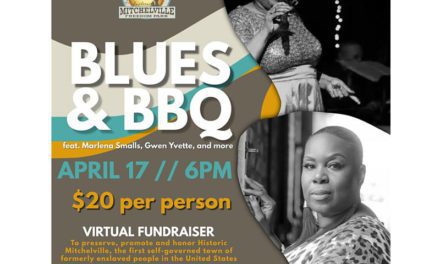 Just to be sure I had this straight, a quick dictionary check confirmed that a wingman is a pilot who protects another, lead pilot in a potentially dangerous flying environment, especially in combat. Wingmen typically fly just outside and behind the right wing of the lead aircraft in a flight formation. The wingman’s role is to add an element of mutual support in aerial combat.
Just to be sure I had this straight, a quick dictionary check confirmed that a wingman is a pilot who protects another, lead pilot in a potentially dangerous flying environment, especially in combat. Wingmen typically fly just outside and behind the right wing of the lead aircraft in a flight formation. The wingman’s role is to add an element of mutual support in aerial combat.
According to the U.S. Air Force, “The presence of a wingman makes the flight both offensively and defensively more capable by increasing firepower and situational awareness, permitting the attack of enemies, and increasing the ability to employ more dynamic tactics.”
There is, of course, a slang definition – one who helps, protects or guides a friend or associate, for example, the CEO’s troubleshooting wingman, or a sailor’s buddy in a strange bar in a foreign port. Wingmen are there to watch their man or woman’s back. And you just can’t have too much situational awareness, right?
Gregory G. Fletcher, in “Intrepid Aviators,” (NAL Caliber, 2012) chronicles the heroics of the Navy’s marvelous Air Group 18 (it included his torpedo bomber pilot father, Will) which among many missions during WWII helped to sink the Japanese super battleship Musashi. One quickly learns how vital good wingmen are. Here is an example from another air group that left me breathless.
Late in the war, May 10, 1945, a ground based four plane group of Marines flying F4U Corsairs took off from Kadena, Okinawa. The lead plane was flown by Captain Kenneth L. Reusser. His wingman was 28-year old Lieutenant Robert R. Klingman of Binger, Oklahoma. They climbed to 10,000 feet on patrol where they spotted a Japanese reconnaissance plane high above them.
As they rose in pursuit, so did the twin engine “Nick” (Kawasaki Ki 45), on a photographic mission to coordinate future mass kamikaze attacks. Two of the Corsairs topped out 2,000 feet below the Nick but Reusser and Klingman fired off some of their ammunition to lighten their aircraft and continued the chase. They caught up at 38,000 feet. Reusser hammered away with his .50-caliber machine guns. He shot it up badly but ran out of ammo and the Nick sped along, its rear gunner zeroing in on them.
Klingman’s turn. He bored in only to find that his guns had frozen at the extremely high altitude. Undeterred, he persisted fearlessly in an effort to chew up the Nick with his propeller. As historian Edward Jablonski noted in “Airwar” (1971, Doubleday), he started “hacking away at the tail assembly, biting pieces out of the rudder.” The Nick flew on with Klingman in hot pursuit, still unable to shoot. He bore in for a second time and “sheared away the rudder completely and chewed away a piece of the right stabilizer.” Then he had the verve to come in for a third crack at the enemy plane with its tail gunner firing away at him. Jablonski informs us that “His buzz saw propeller went to work again… the stabilizer fluttered away into the slipstream and the Nick bucked into a spin.” It plummeted to 15,000 feet before its wings snapped off and it quickly crashed into the sea.
So far so good, right? Only now Klingman ran out of fuel. He nevertheless managed to dead stick his way back safely onto his airstrip. Peeling out of the cockpit, he looked to check out the damage and saw that a chunk of the massive 13-foot propeller was gone; his “wing, engine and fuselage were pocked and pieces of the Nick were found lodged in the Corsair’s capacious cowling.” All in a day’s work? Maybe for Lieutenant Klingman if not for most of the rest of us. For their actions, Klingman and Reusser were awarded the distinguished Navy Cross, their extraordinary heroics, according to the Navy, upholding “the highest traditions of the United States Naval Service.”
Supporting our forces back home, of course, America’s incredible gang of Rosie the Riveters, a vibrant mass of wingmen in their own right, kept those warplanes rolling off production lines around the country working right alongside the men. And one of them, deep breath, is still on the job assembling aircraft at a Boeing plant in Long Beach, California. She is now 93 years old. She is also incredible.
Her name is Elinor Otto. She began her career in 1942 with a small group of women at Rohr Aircraft in Chula Vista, California. Founded in 1940 by Fred Rohr, they started building Sperry bombsights for Consolidated Aircraft Corporation and then cowlings for Lockheed. Elinor is currently a mechanic whose daily responsibility is focused on riveting wings (yes wings) on C-17 Globemaster III aircraft used for military transport. She is very small in physical stature but spry, colorful, energetic and an inspiration to her coworkers. How many of us park as far as we can from our workplace in order to get more exercise?
Thankfully, her local community knows they have a treasure on hand. Recently, Elinor was honored when Long Beach opened Rosie the Riveter Park. One of her coworkers, Craig Ryba, said it all when he noted, “She’s an inspiration. She just enjoys working and enjoys life.” Elinor does plan to retire in a year or so but laughingly says “When I go to heaven I hope God keeps me busy!” So that’s how we won the war. Lieutenant Klingman and Elinor Otto and lots more like them, all over the country. All over the world.
Who can deny that all of us need a good wingman, or two, maybe more, to help us get through this uncertain and often very difficult life we are asked to live. A spouse is a great candidate, or a terrific big brother or sister, a supportive parent, uncle, aunt or… if you’re descended from Elinor, a great grandmother.
Back to Greg Fletcher’s book for a moment. The Intrepid’s torpedo bombers’ wives “encouraged and supported one another. They socialized like sorority sisters, bolstering one another’s spirits and comparing notes on how to make ends meet on a junior officer’s salary. The bond among the wives provided stability and security, a bond that was as important for the psychological well-being of the husbands as it was for the wives.”
So who is your wingman? Someone to watch out for you, protect you, look out for your best interests. Maybe even get tough with you from time to time, get you to remember to always do the right thing and not always just take the path of least resistance. Someone to call your bluff, lift you up, take you to the hospital, walk your dog when you’re hurting, pitch in a few bucks when times get tough. How did that wonderful old Gershwin song go? Oh yes, “Won’t you tell him please to put on some speed, follow my lead, oh how I need, someone to watch over me.”








